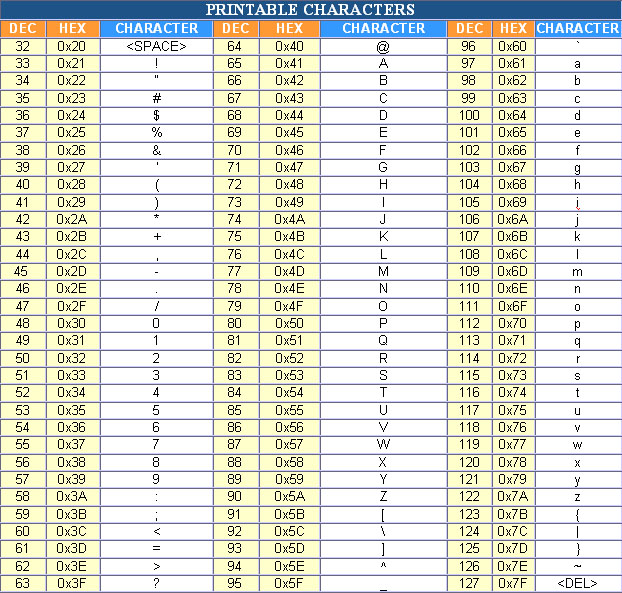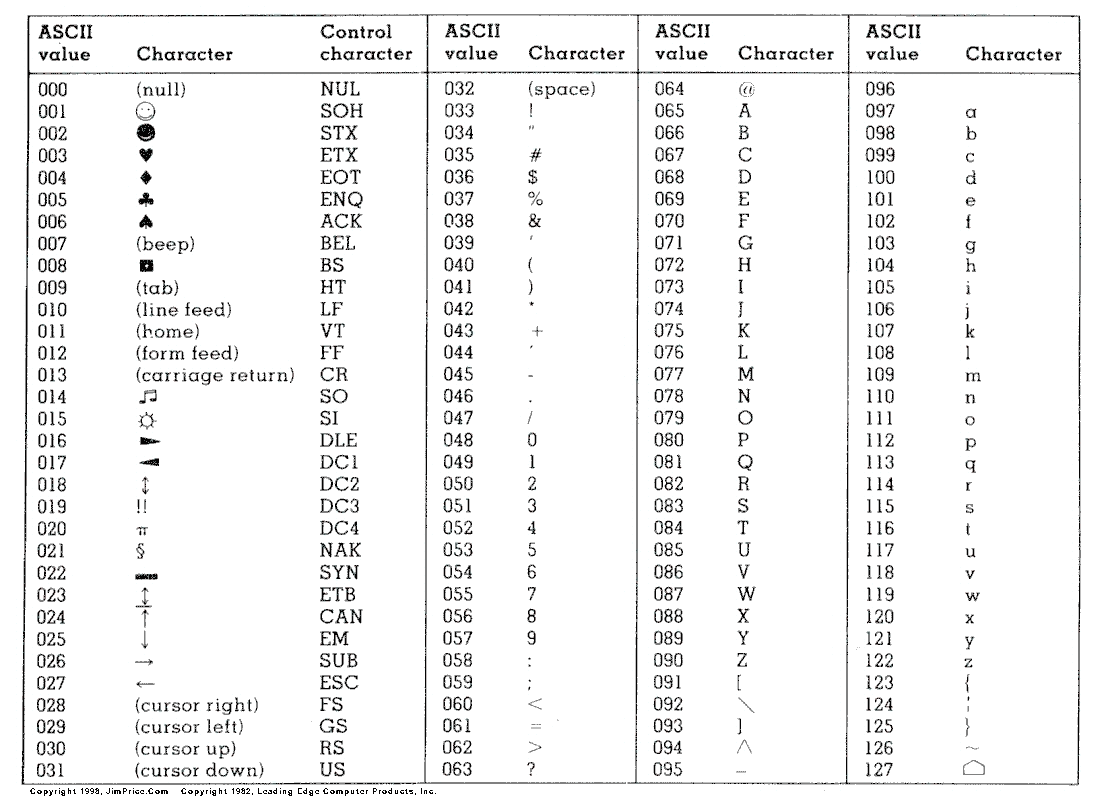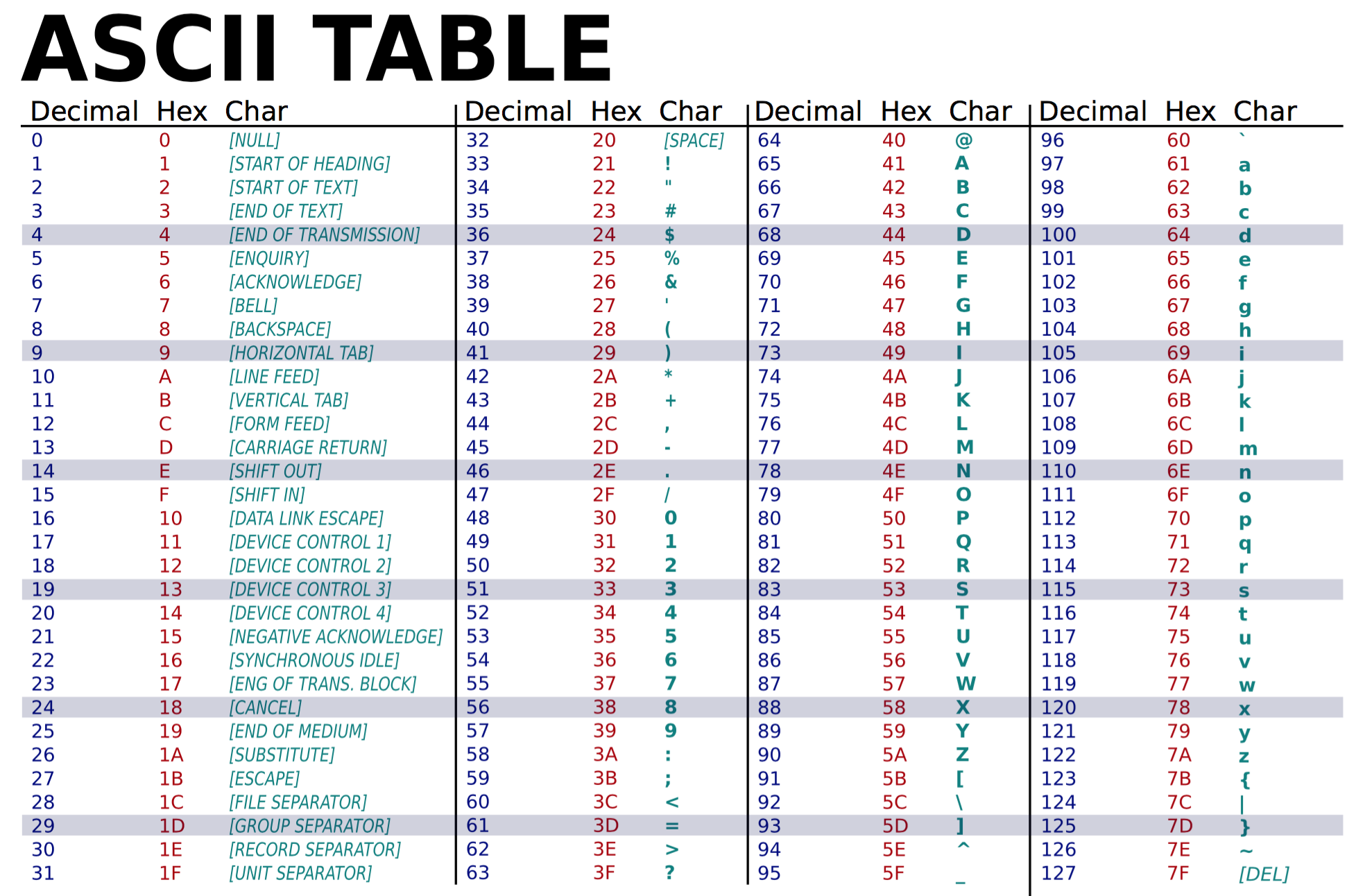What’s good, y’all?
Today we’re talking about ASCII character codes. You might be wondering, what the heck is that? Well, it’s basically a system of codes that represents characters, like letters and numbers, in a way that computers can understand.
Printable ASCII characters
The first thing you need to know is that there are two types of ASCII characters: printable and non-printable. Printable characters are basically any character that you can see on your screen, like letters, numbers, and punctuation marks. Check out this image for a full list of printable ASCII characters:
 But wait, what do all those numbers mean? Well, each character is assigned a unique number value called a code point, which is represented in binary form. Basically, computers work with binary code (that’s a whole other topic), so each character is assigned a specific set of 0’s and 1’s to represent it.
But wait, what do all those numbers mean? Well, each character is assigned a unique number value called a code point, which is represented in binary form. Basically, computers work with binary code (that’s a whole other topic), so each character is assigned a specific set of 0’s and 1’s to represent it.
Non-printable ASCII characters
Now, let’s talk about non-printable characters. These are characters that you can’t see on your screen, like line feeds, tabs, and carriage returns. Check out this image for a full list of non-printable ASCII characters:
 These characters might not seem all that important, but they’re actually really essential for formatting text in computer programs. For example, if you’re writing a program that needs to insert a line break, you would use the ASCII code for a line feed to do that.
These characters might not seem all that important, but they’re actually really essential for formatting text in computer programs. For example, if you’re writing a program that needs to insert a line break, you would use the ASCII code for a line feed to do that.
ASCII tables
So, now that you know a bit about ASCII characters, you might be wondering where you can find a full list of ASCII codes. Well, there are a ton of ASCII tables available online. Here are a few of my favorites:
Coding Tips: ASCII Table
 This ASCII table is simple and easy to read. It only includes the printable characters, but it’s a great reference if you’re just starting out.
This ASCII table is simple and easy to read. It only includes the printable characters, but it’s a great reference if you’re just starting out.
Characters
 This ASCII table is a bit more detailed. It includes both printable and non-printable characters, as well as some special characters, like the copyright symbol and the degree symbol.
This ASCII table is a bit more detailed. It includes both printable and non-printable characters, as well as some special characters, like the copyright symbol and the degree symbol.
Non-English characters
 This ASCII table is similar to the previous one, but it also includes some non-English characters, like the accent marks used in Spanish and French.
This ASCII table is similar to the previous one, but it also includes some non-English characters, like the accent marks used in Spanish and French.
The most 95 common ASCII characters
 This ASCII table is a bit different from the others. Instead of listing all of the characters, it only includes the 95 most common ones. This can be a great reference if you’re writing a program and you want to make sure that the characters you’re using will be compatible with most computers.
This ASCII table is a bit different from the others. Instead of listing all of the characters, it only includes the 95 most common ones. This can be a great reference if you’re writing a program and you want to make sure that the characters you’re using will be compatible with most computers.
Wrapping up
So, there you have it. ASCII character codes might seem a bit confusing at first, but they’re actually pretty simple. Just remember that each character is assigned a unique code point, and that code point is represented in binary form. And if you need to insert a non-printable character, like a line break or a tab, you can use the appropriate ASCII code to do that.
Thanks for reading, y’all! Stay curious.